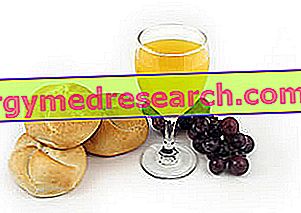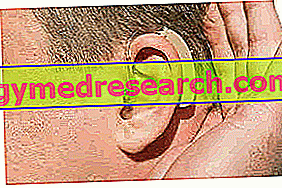The bee sting causes the transmission of a poisonous agent (toxins etc.) from the insect to the human body.

In cases without hypersensitivity, the lesion tends to completely disappear in one or two days.
Recall that that of bee, unlike most insect bites, almost always provides for the anchoring of the sting (often with poison bag) to the skin.
What to do
- Prevent bee stings by acting as specified in the paragraph on prevention.
In the absence of allergic reactions, once you have received the puncture, you can alleviate the symptoms by proceeding as follows:
- Remove the bee sting:
- Quickly: it is important to remove it within the first 20 '', after which the damage can be aggravated.
- Using a credit card or a blunt blade or applying pressure with your fingers.
- Clean the area.
- Apply cold packs, even with ice.
- Apply drugs against insect bites.
- Take advantage of herbal remedies.
What NOT to do
- Avoid breaking the poison bag. It often happens when tweezers are used.
- Scratch the surface of the wheal. In most cases:
- It aggravates the symptoms.
- It causes excoriation that tends to become infected.
What to eat
There are no foods that can prevent or treat bee stings.
On the other hand, there are nutrients that perform an anti-inflammatory and immunostimulant action.
In the case of a single puncture, the variation of the diet is not significant. However, if the punctures are multiple, it is logical to think that the inflammatory reaction can be of considerable entity.
The most suitable nutrients are:
- Omega 3: these are essential fatty acids that have an important anti-inflammatory and immunostimulatory function. They are mainly found in:
- Fat blue fish: sardines, mackerel, bonito, alletato etc.
- Algae.
- Some oily seeds: especially flax, almonds, kiwi, grape seeds etc.
- Derived oils: fish, algae, krill and specific oil seeds.
- Vitamin and salt antioxidants:
- Vitamin A: in the form of retinol and carotenoids. It is found in milk, cheese, liver, egg yolk, orange or red fruit and vegetables (carrots, peppers, pumpkins, etc.).
- Vitamin C: it is found mainly in some vegetables and in acidulous fruit: lettuce, parsley, kiwi, citrus fruits, peppers, etc.
- Vitamin E: it is found mainly in the germ of cereals, in some oily legumes, in most oil seeds and in extraction oils: wheat germ, corn, sunflower, soy, nuts, related oils, etc.
- Zinc and selenium: mainly contained in meat, in fishery products, in milk and derivatives, in eggs.
- Other antioxidants: above all of polyphenolic origin. They are very abundant in vegetables, fruit, legumes, whole grains, red wine, etc.
What NOT to Eat
In case of bee sting there are no real foods advised against.
On the other hand, certain molecules and some metabolic conditions predispose to inflammation and could be counterproductive:
- Obesity: excess fatty tissue releases mediators of inflammation.
- Hyperglycemia and type 2 diabetes mellitus: they also worsen the state of global inflammation.
- Excess of omega 6 fatty acids: contained above all in some oily seeds and in the relative fats (for example peanuts), they should maintain a correct relationship with omega 3. If present in excess, some omega 6 could increase the factors of inflammation.
- Saturated and hydrogenated excess fats: present mainly in sweet and savory snacks, in fast food restaurants, etc., they exert a negative effect on systemic inflammation.
Natural Cures and Remedies
All herbal remedies with anti-inflammatory action are natural remedies against bee stings. In particular:
- Aloe: gel or pulp for topical use.
- Calendula: ointment for topical use.
Pharmacological care
The pharmacological remedies against bee sting (in the absence of allergy) are:
- Anti-inflammatory, anesthetic and antihistamine ointments for topical use, which contain:
- Hydrocortisone.
- Local anesthetics: lidocaine or paramoxine.
- Antihistamines.
- Ointments against itching, like calamine lotion.
- NON-steroid oral anti-inflammatory and painkillers:
- Paracetamol.
- Ibuprofen.
- Antihistamines.
- Anti-inflammatory and oral steroid painkillers (short cycles, up to 3-5 days).
Prevention
Prevention of bee sting mainly concerns the behavioral aspect.
It is necessary to keep in mind that bees:
- They are more aggressive in the summer period.
- They are more aggressive when the weather is unstable.
- They are more aggressive when annoyed or there is a conflict between various colonies or other insects (wasps, hornets, etc.).
- I can prick through clothes; however, these can protect from the sting anchor.
- I am strongly annoyed by:
- Human breath.
- Perfumes, sun creams and deodorants.
- Sudden movements.
- Killing their peers.
- Dark colors.
Furthermore, we recommend:
- Avoid frequenting places at risk (woodsheds, fruit and flowering trees, etc.).
- Avoid the risk factors mentioned above.
- Avoid walking barefoot.
- Prefer white or light clothing.
- Equipping the houses with mosquito nets.
Medical treatments
There are no alternative medical remedies to the removal of the sting, to the pharmacological treatment and to the application of phytotherapeutic methods.



